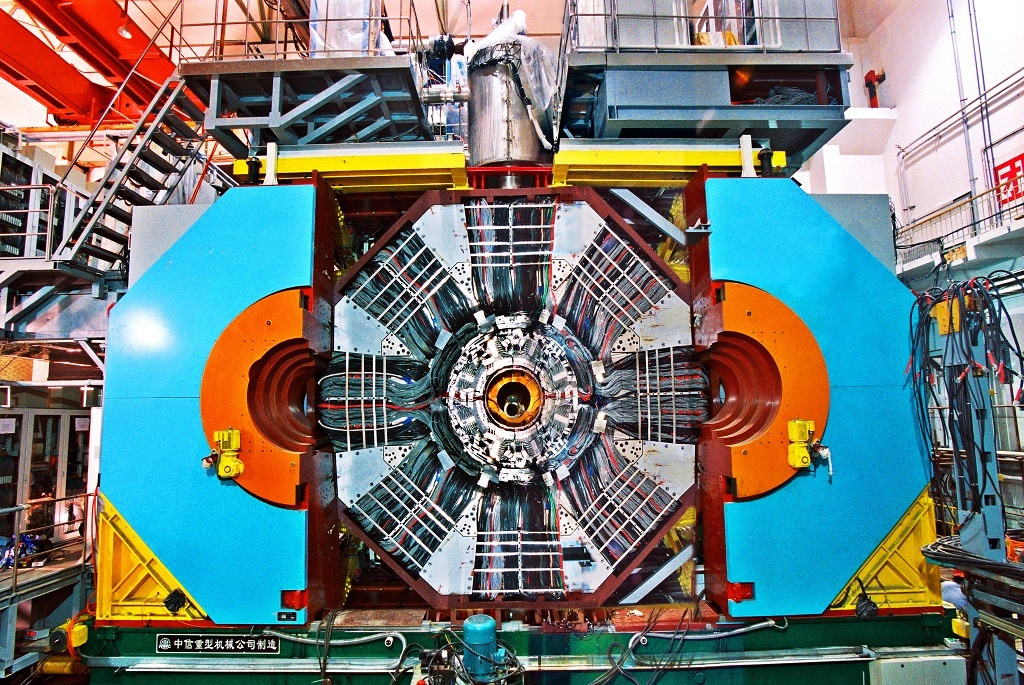- Facilities at a Glance
- All Facilities
- Material
- Earth System and Environment
- Engineering Technology
- Space and Astronomy
- Particle and Nuclear Physics
- Energy
- Biology
- 1
- 2
- 3
Beijing Electron Positron Collider (BEPCII)
Create Proposal The Beijing Electron-Positron Collider II (BEPCII) is IHEP’s main accelerator facility. BEPCII is a two-ring e+e- collider running in the tau-charm energy region (Ecm = 2.0-4.2 GeV), which, with a design luminosity of 1 × 1033 cm-2s-1 at a beam energy of 1.89 GeV, is an improvement of a factor of 100 over its successful predecessor, BEPC. It can run in collision mode, allowing the BESIII experiment to collect data, or in synchrotron radiation mode, providing beam for the Beijing Synchrotron Radiation Facility.
The original BEPC, which completed construction in 1988, was China’s first high-energy particle accelerator. After several years of successful running, including significant achievements in the charm physics field, such as the tau mass measurement, the upgrade to BEPCII began in 2004. Construction was completed in 2008, and running began in 2009, after overcoming the technical difficulties of building a double-ring collider in the narrow, short-circumference BEPC tunnel. In 2016, BEPCII reached its design luminosity of 1 × 1033 cm-2s-1, a world record for this energy range.
In collision mode, BEPCII has produced the world’s largest samples of J/ΨandΨ’ events, as well as events at a range of other energy points. Using these samples, the BESIII experiment has made important discoveries including the discovery of the Zc(3900) and other so-called “XYZ” states.
In synchrotron radiation mode, up till the end of 2016 the accelerator has provided over 15000 hours of dedicated synchrotron radiation light to experiments from 278 institutions around the world, leading to almost 2500 publications.
Equipment
-
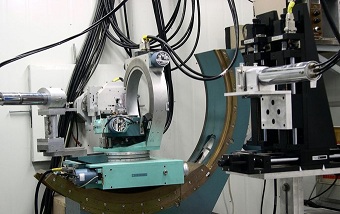
1W1A-Diffuse X-ray Scattering Beamline
1W1A is a diffuse X-ray scattering beamline which locates at No. 12 experimental hall of Beijing Synchrotron Radiation Facility (BSRF). It provides X-ray scatterings (XRS), diffraction (XRD), reflection (XRR) and standing wave (XSW) techniques to various users in scientific community of condensed matter physics and materials science. It operates at 8.05 keV and 13.9 keV with double focusing monochromatic beam. Structure characterization of thin films and crystals can be carried out on this beamline. It can run both in the dedicated mode and in the parasitic mode of Beijing Synchrotron Radiation Facility.
Supported Techniques:
• X-ray scattering (XRS): diffuse x-ray scattering (DXRS), grazing incidence small-angle X-ray scattering (GISAXS)
• X-ray diffraction (XRD), including grazing incidence x-ray diffraction (GIXRD), wide-angle x-ray diffraction (WAXRD), reciprocal space mapping (RSM), and so on;
• X-ray reflection (XRR): including low-angle x-ray reflectivity and extended x-ray reflection (CTR analysis)
• X-ray standing wave (XSW)
Applications:
• Defect structure of single crystals and thin films;
• Defects in crystal materials, thin-film materials, surface/interface of multilayer film and nano-materials .
Detector and Sample environment devices:
• Huber five-circle x-ray diffractometer;
• Area detectors:Mar345 Imaging Plate, Pilatus3X 100K-A
• Point detectors: YAP 9910, NaI(Tl) detector
• X-ray fluorescence Silicon drift detector
• High temperature sample environment (20~1100ºC);
• Low temperature sample environment (-100ºC~350ºC)
• Electric-field device: 0~50000 V
• Magnetic-field device: 0~0.43 Tesla
Beamline Controls and Data Acquisition:
Linux operation system, Spec, Mar345, PyMCA
Beamline Specs
X-ray Source: Wiggler
Energy Range: 8.05 keV, 13.9 keV
Energy resolution (ΔE/E): 4.4×10-4
Flux (photons/sec): >4×1011 @8.05 keV
Beam Size (H×V): adjustable, typical values: 0.6 mm x 0.3 mm -

1W1B-XAFS Beamline
1W1B beamline is dedicated to hard X-ray Absorption Fine Structure (XAFS) spectroscopy, located in the No. 12 experimental hall of Beijing Synchrotron Radiation Facility (BSRF). XAFS is a powerful technique to probe the local geometrical and electronic structure around the absorbing atoms. Its unique characteristics, including element-specificity, nanometer range, and high sensitivity, make it a versatile technique at synchrotron radiation sources, and widely used in a large number of fields including physics, chemistry, material science, geology, biology and environmental science. The energy range of 1W1B beamline is 4.5 to 25 keV, which covers the K-edge of major transition metal elements and L3-edge of lanthanide and some heavy metals. Several techniques have been established to meet specific requirements. Some in situ reaction cell can be supported for online measurement. The station could run both in the dedicated mode of synchrotron radiation and parasitic mode.
Supported techniques:
Transmission fluorescence modes (TFY and PFY)
Extreme conditions: Low T (10K), High T (1300 K), High P (50 GPa)
In situ solid-gas reactor
Grazing incidence XAFS method for thin film samples
Time-resolved quick-scanning XAFS measurement
Scopes:
Biology
Environment
Materials
Catalytic
Physics
Chemistry
Geoscience
Archaeology
Detectors
Lytle detector
19-element high purity Ge solid state detector
In-situ reaction chamber
Beamline Specs
Source 1.28T, 7 periods wiggler
Energy Range 4.5-25 keV
Resolution (ΔE/E) (1-3) ×10-4
Flux on Sample ~6×1011 photons/s @ 10 keV
Beam Size (H×V) 0.9mm × 0.3 mm (FWHM)
100mm × 100mm with polycapillary focusing -

1W2A-SAXS beamline
1W2A is a small angle X-ray scattering beamline, which locates at No.15 experimental hall. Multipole permanent magnetic wiggler is employed as the light source, whose brightnes is about 10000 times higher than normal X-ray apparatus. Normal SAXS, WAXS, GiSAXS, simultaneous S/WAXS models at different camer length (0.2-4.5m) can be performed to study the structures of nano-scale clusters with in 1-200nm, such as shape, particle size and distribution, molecular weight, porosity ratio, et al. A series of commercial and customized in-situ devices are available here, such as stretching devices, high and low temperature devices, time-resolved device. This beamline runs not only in the dedicated mode of synchrotron radiation but also in the parasitic mode.
Supported techniques:
Small Angle X-ray Scattering
Wide Angle X-ray Scattering
Grazing incidence Small Angle X-ray Scattering
Timed resolved Small Angle X-ray Scattering
Scopes:
Nano-materials
Mesoporous material
Biological macromolecule
High polymer
Chemistry
Geoscience
Beamline equipments
Small angle camera
Detectors:Mar165 CCD;Linear-150,Curved-200
Beamline Specs
Source Wiggler
Energy Range 0.154nm
Resolution (ΔE/E) ~10-3
Flux (photons/sec) ≥1011
Beam Size (H´V) 1.2mm ´0.3 mm
Angular resolution 0.5mrad -

1W2B-Diffraction, Spectroscopy and Time Resolution Beamline
1W2B is a Diffraction, Spectroscopy and Time Resolution beamline and locates at No.15 experimental hall. Originally, it is a Macromolecular Crystallography beam line operating in the 5-18 keV range, with beam spot size of 1mm(H)´0.6mm(V). Recently 1W2B developed the capability of hosting X-ray absorption spectroscopy (XAS) experiments, small-angle X-ray scattering (SAXS) experiments and time resolved experiments. It runs not only in the dedicated mode of synchrotron radiation but also in the parasitic mode.
Transmission XAS with parallel plate ion chamber and fluorescence XAS with Lytle detector is available. Typical time for taking a XAS spectrum is 15 minutes. Quick XAS is also available, which permits several ten seconds minimum to take a spectrum. Advanced self-developed area silicon detector will be equipped in 2018 which will permit spectrum acquisition of much lower concentration samples (approximately several parts per million).
A SAXS system was assembled in June 2016. During the dedicated beam time, we tested the setup of the system and had a trial run. The system began to host users in June 2017. The sample-to-detector distance is adjustable from 0.5 meter to 1.2 meter.
Utilizing laser pump - X-ray probe method, pico-second resolution X-ray absorption spectroscopy and X-ray diffraction method were developed on 1W2B station, which have wide application prospects in photo-chemistry and photo-physics. Ultrafast X-ray absorption spectroscopy began to host users in June 2017.
Supported techniques:
Macromolecular crystallography
Multi-wavelength/Single-wavelength Anomalous Dispersion
Multiple/Single isomorphous replace
Molecular replace
Micromolecule crystallography
X-ray Absorption Fine Structure
Small angle X-ray scattering
Wide angle X-ray scattering
Pico-second resolution X-ray absorption spectroscopy and X-ray diffraction method
Scopes:
Biological Macromolecular
Organic/Inorganic micromolecule
Beamline equipments
Pilatus 1M detector
Ion Chamber and Lytle detector
Time resolved pump-probe system
Mardtb and Mar 165 CCD
Cryogenic Sample Changer(Marresearch, 18 samples)
Oxford cryogenic freezing system
Cold-light source optical microscope
Beamline Specs
Source Wiggler
Energy Range 5-18 keV
Resolution (ΔE/E) better than 4×10-4
Flux (photons/sec) 1012
Beam Size (H×V) 1mm×0.6 mm -
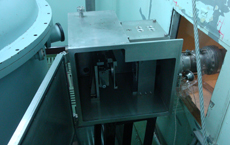
1B3-X-ray Lithography Beamline
1B3 is beamline for lithography and locates at No.13 experimental hall. It provides deep X-ray lithography and nano X-ray lithography. The alternation between deep and nano X-ray lithography is achieved by a mirror with 60nm-thick chromium film. The PMMA structure as deep as 1.5mm is achieved with deep X-ray lithography mainly working at 4 keV after a 300μm-thick Be window. Hundreds of nanometer structure is achieved with nano X-ray lithography mainly working at 1.5 keV after the Cr mirror and a 0.5μm-thick Si3N4 filter. The station could run both in the dedicated mode of synchrotron radiation and parasitic mode.
Supported techniques:
deep X-ray lithography
nano X-ray lithography
Beamline equipments
1000-superclean lab (300m2), 100-superclean lab (10m2)
Ultrapure water equipment
Rusty lab
Minor handicraft lab
Vacuum coating
Plating machine
Extreme ultra violet lithography
Double-sided alignment lithography machine
Reactive Ion Etching
Scanning electron microscope
Microscope
Beamline Specs
Source BM
Energy Range 1.5keV, 4 keV -

3W1A-Macromolecular Crystallography Beamline
BSRF 3W1-高能测试线站位于13号厅,BSRF 3W1-高能测试线站是国内唯一一条专用的高能线站,主要承担HEPS相关工程任务项目中技术和设备的高能测试任务,也有部分机时用户接待用户实验。
-
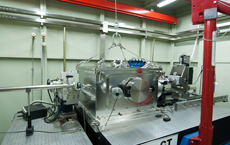
4W1A-X-ray Imaging Beamline
4W1A is an X-ray Imaging beamline located at No.12 experimental hall of BSRF. It is mainly devoted to X-ray Diffraction Enhanced Imaging (DEI) and zone plate based full field Transmission X-ray Microscopy (TXM). As one type of phase contrast imaging method, DEI can get high image contrast from samples, especially for those made up of low-Z elements. The usable energy for DEI is 8~25keV with field of view about 13mm×13mm. TXM runs at large field of view (LFOV) mode and high resolution (HRES) mode at about 8keV with field of view of 65 microns and 15microns respectively. The spatial resolution capability for the instrument is a little better than 50nm with standard test sample (Siemens star pattern) at HRES mode. For real sample, the gettable spatial resolution depends on sample’s contrast. The beamline can also run at white beam mode, with which X-ray topography experiment can be carried out.
This beamline only runs in the dedicated mode of synchrotron radiation.
Research Scopes:
1. Formation mechanism of crystal defects
2. In-situ imaging of materials under load or heating conditions
3. Inner structure of biomedical material and composite material
4. Principle and method research of phase contrast imaging
5. Research of nano-resolution three-dimensional imaging -
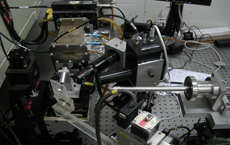
4W1B-Micro X-Ray Fluorescence Analysis Beamline
4W1B is a X-ray fluorescence microanalysis beamline and locates at No.12 experimental hall. It is based on a hard X-ray beamline with wiggler magnet and is dedicated to X ray micro-analysis in biology and material science, and ultra-trace elemental analysis. The incident X-ray energy is monochromatized by W/B4C Double-Multilayer-Monochromator (DMM) at 15keV and is focused down to 50 μm in diameter by the polycapillary lens. The micro-X-ray fluorescence microspectroscopy and two-dimensional mapping experiments can be performed at 4W1B station. This beamline only runs in the dedicated mode of synchrotron radiation.
Supported techniques:
Micro-XRF and micro-XANES
Grazing incidence and emergence analysis
Resonant inelastic X-ray scattering
Scopes:
Geoscience
Biomedicine
Environmental science
Materials
Archeology
Physics
Beamline equipments
Sample scanning table A, B and C
A: translational range 60mm×60mm×25mm ; slewing angle 270°
B: translational range 30mm×30mm×100mm ; slewing angle 360°
C: translational range 45mm×45mm×45mm
Si (Li) Solid State Detector and spectrometer analytical system
Si diode detector
Stereoscopic microscope A:magnification times-50
Microscope B:spatial resolution-1μm,magnification times-450
Ionization chamber beam-monitor system
Beamline Specs
Source Wiggler
Focus Mode quasi monochromatic light
Energy Range 8-15 keV
Flux (photons/sec) >1×108@ 15keV
Resolution (ΔE/E) <7×10-2
Beam Size (H×V) 10μm
Detectability Dozens of ppm
Focus Mode monochromatic light
Energy Range 5-18.5 keV
Flux (photons/sec) >1×1010@ 15keV
Resolution (ΔE/E) <5.5×10-4
Beam Size (H×V) 30μm,50μm,100μm
Detectability 1ppm -
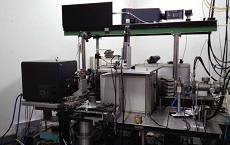
4W2-High Pressure Beamline
4W2 is a high pressure beamline and locates at No.12 experimental hall of BSRF. Combining with high pressure Raman spectroscopy, it is possible to study the phase transition, equation of state, melting curve, strength, elasticity and texture of materials under high temperature and high pressure. The diffraction system includes KB focusing mirrors, diamond anvil cell, sample positioning stages and 2D detector. This beamline only runs in the dedicated mode of synchrotron radiation.
Supported techniques:
Angular dispersion X-ray diffraction
Radial X-ray diffraction
Rapid compression
High pressure Raman spectrum
X-ray Energy Range: 10-25 keV
Energy Resolution (ΔE/E): 7×10-4@ 20keV
Flux (photons/sec): 1.2×109@ 20keV
Beam Size: 26μm×8μm (H×V) -
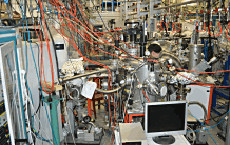
4B7A-Medium Energy X-ray Beamline
4B7A is a Medium Energy Beamline and locates at No.12 experimental hall. It is a bending magnet end station dedicated to medium-energy XAFS spectroscopy.It mainly consists of high vacuum measurement chamber, low vacuum measurement chamber, He gas environment measurement room, Transfer chamber, sample pretreatment device and MBE device. Usually two types of detection modes are in use for measuring XAFS of elements: partial fluorescence yield (PFY) and total electron yield (TEY) . The energy range of this beamline is from 1.7keV to 5.8keV ,which covers the K-edge elements Si, P, S, Cl, Ar, K,Ca ,Ti and L-edge of of the rare earth elements. All of these elements play important roles in the fields of geoscience mcircumstance science, circumstance science and bioscience, and the clear understanding and comprehension about the nature of the substances formed by these elements are the key ones related to our national economic and social development.This beamline runs not only in the dedicated mode of synchrotron radiation but also in the parasitic mode.
Supported techniques:
Mid-energy X-ray spectroscopy
Optical metrology
Scopes:
Environment science
Biology
Materials
Agriculture
X-ray metrology
Beamline equipments
13 element fluorescence detector
Cryogenic equipment
On-line annealing device
Beamline Specs
Source BM
Monochromator Type Si (111), InSb(111)
Energy Range 2050-5800 eV, 1700-3400 eV
Flux (photons/sec) 1010@ S K edge
Resolution (E/ΔE) 7000
Beam Size (HxV) 3mm×1mm -

4B7B-Soft X-ray Beamline
4B7B is a soft X-ray optics beamline and locates at No.12 experimental hall. It is a soft X-ray beamline and applied to X-ray absorption spectroscopy(XANES) and detector calibration.
Supported techniques:
Soft X-ray spectroscopy
X-ray magnetic circular dichroism
Optical metrology
Scopes:
Materials
X-ray metrology
Beamline equipments:
Fluorescence detector
Cryogenic equipment
Magnetic field device
Beamline Specs:
Source BM
Energy Range 50-1700 eV
Flux (photons/sec) 1010@ Fe L edge
Resolution (E/ΔE) 1000
Beam Size (H×V) Conducting sample 1mm×0.1mm nonconducting sample 4mm×2mm -
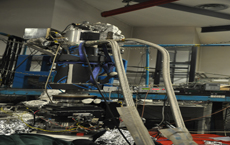
4B8-Vacuum Ultraviolet Beamline
4B8 is a vacuum ultraviolet beamline ,with source Wavelength Range 125-360 nm, runs not only in the dedicated mode of synchrotron radiation but also in the parasitic mode. Additionally, this beamline has realized long-range control for fluorescence spectrum experiment and users don’t need to come to BSRF. Supported techniques: Steady-state Fluorescence spectrum; Synchrotron Radiation Circular Dichroism; Photocurrent and temporal photoresponse of devices to VUV light; Transmission spectrum. -
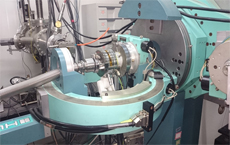
4B9A-X-ray Diffraction Beamline
4B9A is a X-ray diffraction beamline and locates at No.12 experimental hall. The XRD experimental station at the end in beamline 4B9A may develop the research of material science , mult-layer fim science, supperlattice science, geological science , etc. This beamline could run both in the dedicated mode of synchrotron radiation and in the parasitic mode.
Supported techniques:
Powder XRD
High Temperature XRD
Low Temperature XRD
Mythen Detector XRD
XAFS
Scopes:
Materials science
Mult-layer fim science
supperlattice science
Geological science
Beamline equipments
Huber5020 six-circle diffractometer
Detector: Mythen detector, Ce-scintillator detector, Lytle fluorescence ionization chambe
Anton Paar in-sit high temperature furnace and low temperature furnace
Beamline Specs
Source BM
Monochromator Type Si (111)
Energy range 4-15 keV
Flux (photons/sec) 1010 @ 8 keV
Resolution(ΔE/E) 3×10-4
Beam Size (H×V) 2mm×1mm
Angular resolution 0.9arc-second -
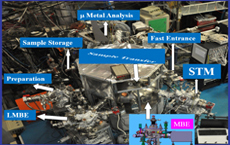
4B9B Photoemission Spectroscopy Beamline
4B9B is a Photoemission Spectroscopy beamline and locates at No.12 experimental hall. This beamline runs not only in the dedicated mode of synchrotron radiation but also in the parasitic mode. It is composed of eight chambers each with its own distinctive functionality. The radial distribution chamber is the center of the endstation, with a function of distributing sample between the chambers around it under ultrahigh vacuum condition. The analysis chamber made of metal will be equipped with electron analyzer of 2D MCP-CCD detector, MCP-LEED, X-ray Al/Mg cathode gun, VUV light source, and low temperature sample manipulator. The STM chamber is with varied temperature ability. The sample preparation chamber has high temperature, >1500K, annihilation ability. Laser-MBE and MBE both aimed at layer-by-layer thin film growth of complex oxide systems and simple metal systems, respectively.
Beamline Specs
Source BM
Energy range 15-1000 eV
Flux (photons/sec) >1×1010
Resolution(E/ΔE) ~1500
Beam Size (HxV) <2mm×0.8mm
NOTICE
-
Call for Proposals for HEPS Phase II Beamlines May 23,2022


